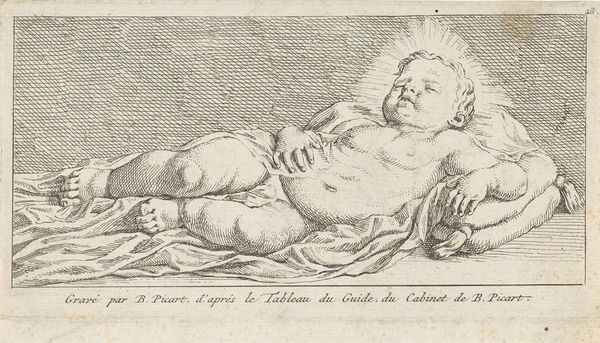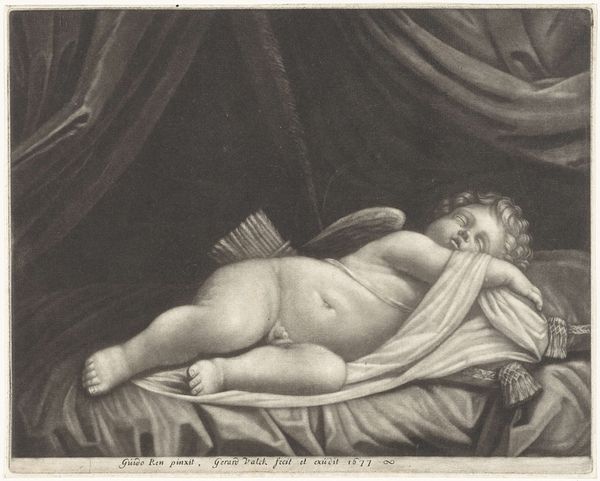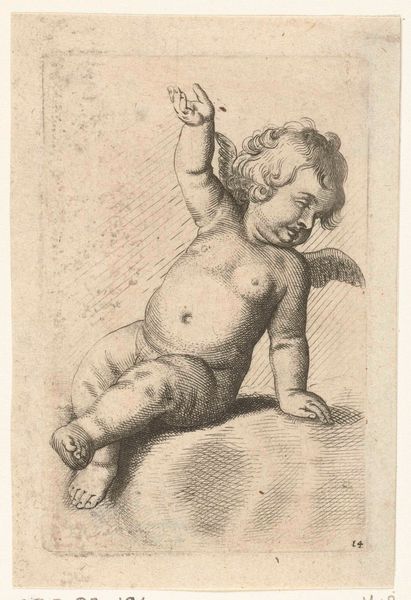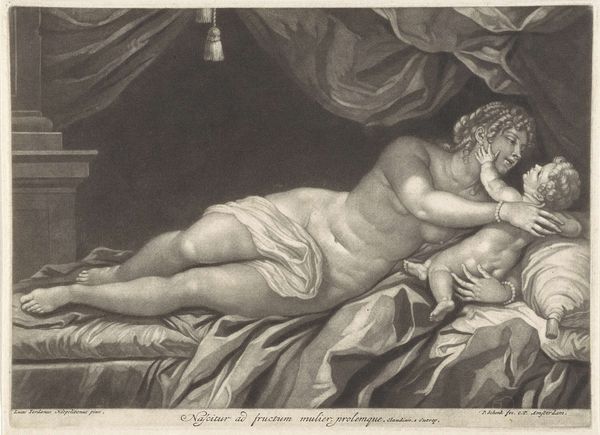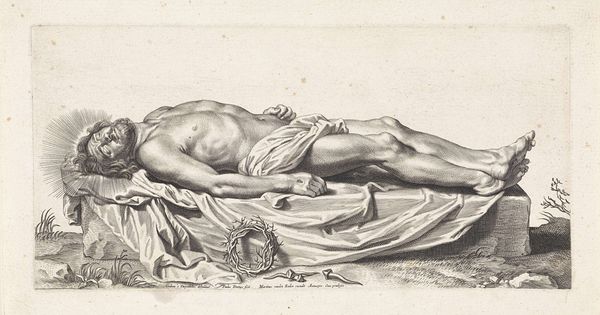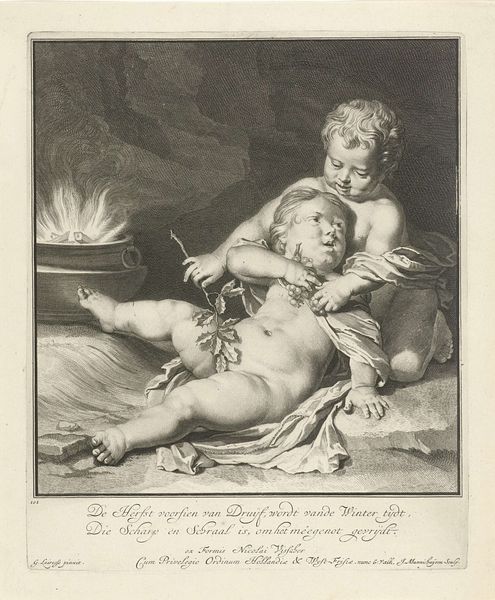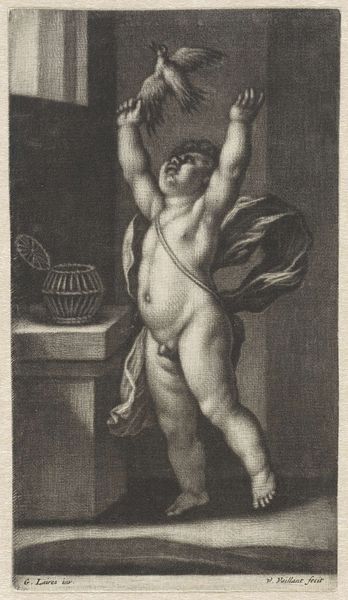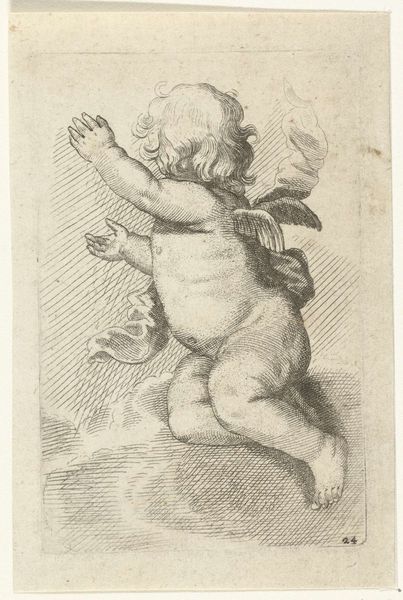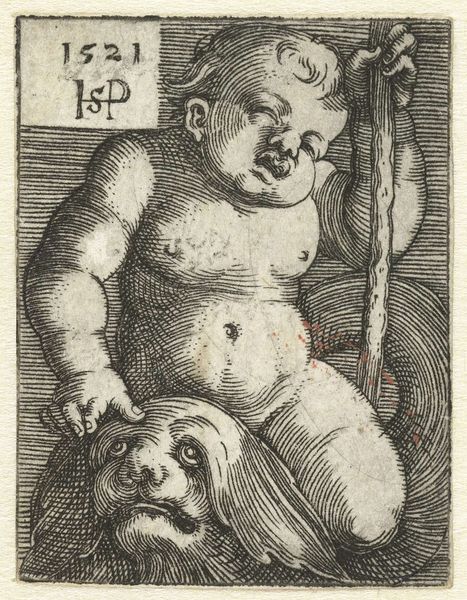
print, engraving
#
allegory
#
baroque
# print
#
figuration
#
momento-mori
#
line
#
nude
#
engraving
Dimensions: height 159 mm, width 221 mm
Copyright: Rijks Museum: Open Domain
Curator: I find myself strangely drawn to Pieter de Jode II’s “Allegory of Death,” an engraving made sometime between 1628 and 1670. There's a certain starkness, wouldn't you agree? Editor: Stark indeed! The almost sculptural quality created by the line work, the clear distinction between light and shadow… and that skull! There's an immediacy despite its age. Is it supposed to be unnerving? Because it is. Curator: Well, it belongs to the vanitas tradition, a Memento Mori... that juxtaposition of youthful beauty with the grim reminder of mortality was meant to encourage reflection on life's fleeting nature and a proper approach to God, and prepare the soul for death. De Jode’s handling of materials interests me, too. Consider the reproductive possibilities of the engraving—how accessible would it have been for dissemination across Europe to a large public? Editor: So this isn’t just a pretty picture for a wealthy patron. The printmaking itself facilitates a conversation, a somewhat democratic access to complex, perhaps troubling, theological and philosophical positions on living with impending death... What does it suggest to our contemporary context, in the middle of so many ongoing crises? Curator: Precisely. Now consider this nude infant. It lies passively on the edge of the death bed as a momento mori... that head nestled intimately to a decorative vase of urn alongside the skull. We are all in that space when mortality embraces us. Editor: Yes, death transcends gender, transcends status. But isn't there a tension between the supposed neutrality of death and the gendered portrayal of the figure? The figure certainly has infantile features but appears male... And, considering art's role in perpetuating societal norms, wouldn't viewers at the time read a specific message into this combination of vulnerability, maleness, and mortality? Curator: That is a crucial point about identity in the era that this artist was depicting and for whom... which does get to issues beyond simple mortality, wouldn't you say? And I think for a modern audience, we should all reflect on the images of mortality as we look for meaning. Editor: Agreed. The “Allegory of Death,” far from being a relic of the past, provides, thanks to its accessibility of material and potent visuals, is still, in our context, capable of generating much reflection and provoking crucial discussions about life, loss, and representation. Curator: It truly is. There’s something both timeless and very particular about the kind of labor reflected in this kind of production. Editor: Indeed. Thanks so much for this view into this beautiful but sobering print, "Allegory of Death"
Comments
No comments
Be the first to comment and join the conversation on the ultimate creative platform.
